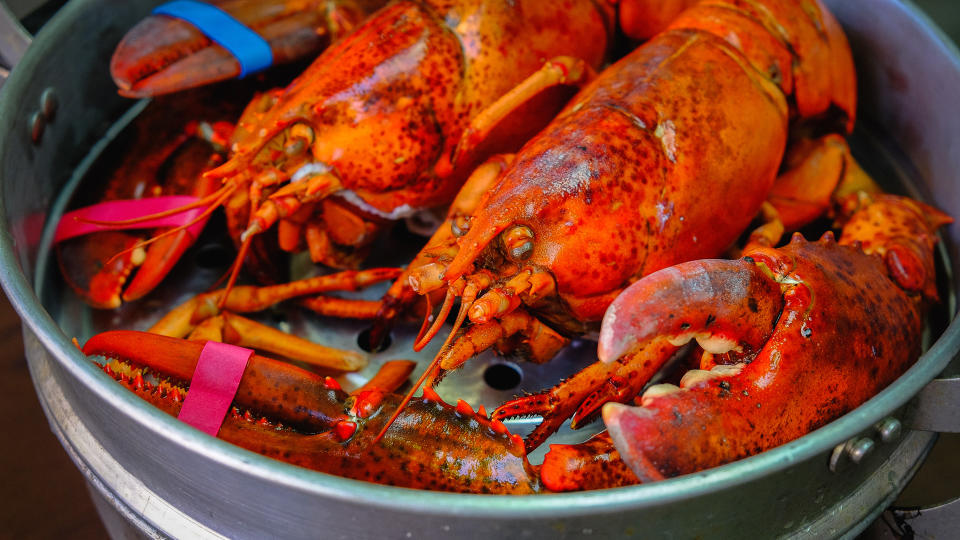10 Everyday Items That Are Now Luxuries for the Middle Class

Going to the store to pick up basic purchases now seems unaffordable. You’ve likely noticed that your grocery bill is higher even though you’re buying the same things you’ve always purchased.
Check Out: 7 Reliable Car Brands the Middle Class Should Consider To Save Money in the Long Run
Learn More: How To Get $340 Per Year in Cash Back on Gas and Other Things You Already Buy
And it’s not just in your mind. There are everyday items that are now considered luxuries for middle-class families.
Also see luxury items the middle class actually can afford.
Wealthy people know the best money secrets. Learn how to copy them.
Steak
“Steak used to be something you could pick up and serve grilled for a weekend barbecue,” said Melanie Musson, a finance expert with Clearsurance. “The cost of meat has put that out of the budget of middle-class individuals.
“If someone does purchase steak, it’s for themselves for a special occasion,” she said. “A good ribeye bone-in steak would cost about $10 to $15 a pound 10 years ago. Now, the price ranges between $20 and $30 a pound. Income has not doubled in the past 10 years.”
Find Out: Here’s How Much the Definition of Middle Class Has Changed in Every State
Buying That Daily Coffee
“Coffee shop coffee used to cost less than $4 per drink,” Musson said. “If you went every day, you could expect to budget $100 a month.
“Now, a handcrafted coffee shop drink will cost $8 or more. You’d have to budget $200 a month. And, with inflation causing necessities to cost so much more, the middle class can’t afford to buy a daily coffee.”
High-end craft coffee — both single-origin and artisanal blends — has gotten more expensive even as supply has increased. Price tags reflect costlier production processes known for their ethically sourced and high-quality beans. For many middle-class families, this means substituting their morning joe for other, less expensive drinks — making what was once a daily necessity quite the occasional treat.
Fresh Seafood
Gone are the days when middle-class families could afford and enjoy fresh seafood on a regular basis.
The extinction of many commercially important fish varieties through overfishing and related environmental issues has made seafood like salmon, shrimp and crab more expensive than ever.
As if this weren’t enough, greenhouse gas emissions and transportation costs also have raised the prices of many foods, making fresh seafood a luxury item in today’s society.
Organic Produce
Organic fruits and vegetables, hailed for their health benefits and their lack of pesticides, now cost much more than their non-organic equivalents.
The inflated prices have made organic produce a rare treat for middle-class shoppers, even though demand for clean food is growing.
Artisanal Cheeses
Specialty cheeses such as brie, camembert, gouda and other delicacies are imported, subject to additional production costs and produced in smaller batches with more labor-intensive handling than usual cheddar.
They are gradually becoming unaffordable novelties rather than a staple on the upscaled middle-class cheese board.
New Clothes
“You can still find affordable items at big-box stores; but, if you’re looking for something for a special occasion, the cost may be out of your budget if you’re living a middle-class lifestyle,” Musson said. “A dress from a department store will cost $100 to $200. A few years ago, you could have found a similar style for $50 to $100.”
Orange Juice
“A lot of people grew up drinking OJ every morning,” Musson said. “Now, orange juice costs as much as $7 for a half-gallon. If you have a few kids, your family could easily go through a carton daily. Orange juice is a luxury drink for the middle class.”
Bacon
“Bacon used to be a fairly inexpensive meat,” Musson noted. “You could find it for about $4 a pound 10 years ago. Now, it’s not unusual to see it priced at $10 a pound. Bacon is as expensive as steak used to be.”
Patio Pots and Hanging Baskets With Flowers
“You used to be able to pick up these items to spruce up your front entry for about $15 to $30,” Musson said. “Now, you can expect to pay more than twice that much at $30 to $100 a pot or basket.
“If you need several for your front porch, expect to pay close to $500. That’s just not in the budget for a lot of middle-class families.”
Light Bulbs
“It’s not necessarily a luxury,” Musson observed. “It’s more of a necessity. But light bulbs cost 10 times what they used to.
“Of course, the argument is that they use less energy and last longer, but the sticker price is still shocking when you’re at the store to pick one up.”
More From GOBankingRates
5 Places in America To Retire That Are Just as Cheap as Mexico, Portugal and Costa Rica
This is The Single Most Overlooked Tool for Becoming Debt-Free
This article originally appeared on GOBankingRates.com: 10 Everyday Items That Are Now Luxuries for the Middle Class

 Yahoo Finance
Yahoo Finance 